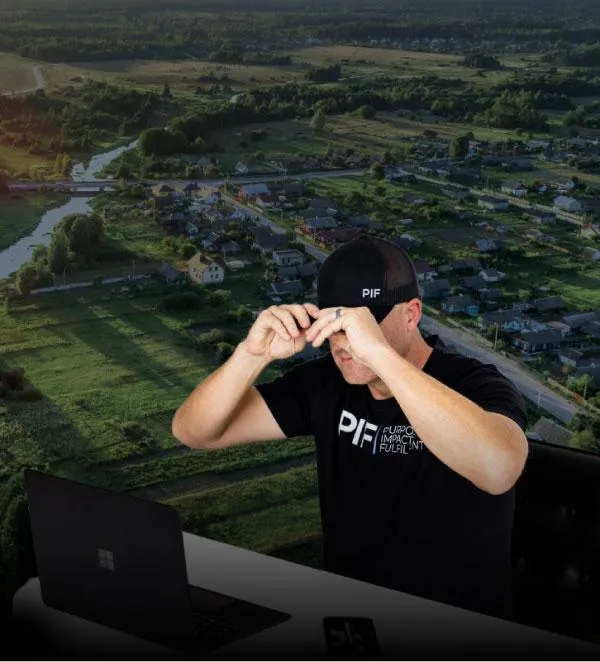Learn The Best Kept Secret in Real Estate®
Cody Bjugan has spent more than two decades structuring successful land development deals and refining the LDP Model™ (Land with Development Potential Model™). His approach has been used across numerous residential projects nationwide, and now he teaches aspiring real estate professionals how to earn meaningful paydays without needing capital, prior experience, or taking on most of the risk.
Learn if Cody’s Model is right for you
No Capital Required
Control land, don’t own it. Use Cody’s proven model without your own money.
Zero Experience Needed
20+ years of expertise distilled into a step-by-step model anyone can learn.
Minimal Risk
Eliminate 95-100% of traditional real estate risk with Cody’s LDP Model.
Proven Results That You Can Trust and Rely On
When you’re ready to transform your financial future, experience matters. Cody’s track record speaks for itself.
$2.75M Average Deal Profit
20+ Years of Refining the LDP Model™
100% Success Rate on Entitlements
Dirt is the Foundation of Real Estate
Dirt controls deals. Whoever controls the first, controls the deal. That’s why Cody’s LDP Model™ focuses on the foundation of all real estate – the land itself.
The VestRight® program teaches Cody's proprietary LDP (Land with Development Potential) Model™ – the same framework that’s helped students achieve life-changing results while solving America's housing shortage crisis.
What Makes This Different:
Virtual & Scalable
Work in markets others don’t even know exist
Value-Add Model
Add serious value by getting the land approved for development
Third-Party Leverage
Let consultants do the heavy lifting while you orchestrate
Win-Win Structure
Pay landowners 5-10X as-is value instead of lowballing

Free Video Training: How Cody Bjugan Makes $2.75M Per Land Deal (No Capital Required)
Before you book a call, see exactly how Cody's LDP Model works. In this training video, Cody breaks down his proven program step-by-step, including real testimonials from successful students.
Real Students. Real Results. Real Impact.

“If you’re looking for something to fulfill your life, to bring you purpose and money, this model is the way to go.”
Eric
VestRight® Student

“VestRight’s land training is an excellent program! The weekly lessons and actions steps provide the tools and direction you need to be successful in this business, I’m currently working on a 340-acre parcel for development all because of this program!”
Joe
VestRight® Student

“Hey Cody, yesterday, I contracted my first deal with DR Horton on a 55 acre deal in Florida. We’re going to potentially make 7 digits on the deal. I wanted to say thank you for bringing this business model to guys like me who were struggling in the transactional wholesale market. This truly is life changing what you have provided.”
Jeff
VestRight® Student

“Thanks for creating a kickass program-a long overdue acknowledgement here. I’ve paid for and taken, many trainings related to real estate, personal development, etc. The Land Acquisition Academy is by far one of the most valuable and comprehensive. Your academy is like the epic accelerator.”
John
VestRight® Student

“VestRight has gone above our expectations! There is no better way to get into a new industry than to basically be mentored by successful people who have been doing this for years. Their experience is invaluable to us.”
Vas & Maria
VestRight® Student

“It is very rare to meet someone as invested in your success as Cody is. Whether within his mastermind group or now in business dealings with Cody, he is genuinely interested in bringing value to all of his relationships. Cody gives you all of the tools his own team uses with nothing held back. If you apply all ofCody’s teachings, you will be successful; period.”
Andrew
VestRight® Student

“Top notch course! It’s exciting to be out of the gate on this information and knowing it’s what I make of it. The course has given me the knowledge that is needed to get into the land development game.”
Rob
VestRight® Student
Why Cody's LDP Model™ Is The Housing Shortage Solution
America faces a 3-7 million home shortage crisis. While others complain about the problem, Cody's LDP Model™ provides the solution. By teaching you to find off-market land with development potential and take it through the entitlement process, you're creating the approved-for-development inventory that America's home builders desperately need.
Bridging the Gap
Cody's LDP Model connects builders to the entitled land they need, and pays landowners 5-10X the as-is value of their property.
Purpose-Driven
You’re not just doing deals. You’re creating legacies for landowners and creating neighborhoods where families can flourish.

Here's What You Get in VestRight®
Comprehensive training, proven resources, and ongoing support to ensure your success with Cody's LDP Model™.
Core Training Modules
The VestRight® program teaches how to find off-market land with development potential, understand home builders' needs through market analysis, navigate the entitlement process for project approval, structure low-to-no risk deals for maximum profit, and execute effective exit strategies.
Exclusive Resources
Unlock access to Cody’s hand-picked vendor network, proprietary calculators that simplify deal analysis, the very contracts that have powered successful projects across the nation, and real-time market intelligence that keeps you ahead of builder demand and housing trends.
Ongoing Support
Join our weekly call series for direct access to Cody and his team, connect in our vibrant community with exclusive channels for members, participate in deal-review sessions for expert feedback, and access updated resources that keep you aligned with evolving market conditions.
© 2025 VestRight | All rights reserved | Privacy Policy | Terms of Use
